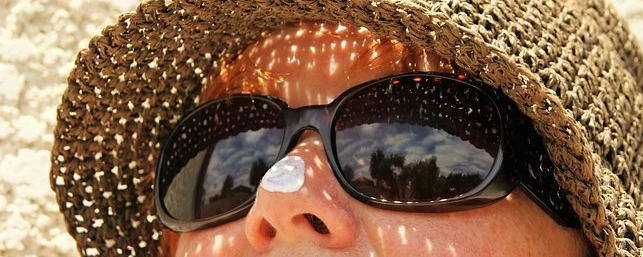By Tiffany Liang
We know that we should wear sunscreen when heading outdoors on a hot, sunny day, but slathering on the sun lotion is often the last thing on our minds during the cold, dark days of winter. Besides, we need all the Vitamin D we can get, right?
Well, let’s first break down what sunscreen does. The skin-damaging rays that the sun emits are called ultraviolet (UV) rays, of which there are two main types: ultraviolet A rays (UVA) and ultraviolet B rays (UVB). The SPF rating on the bottle indicates the level of UVB protection. UVB causes the classic sunburn, which is why most people apply sunscreen. UVA, on the other hand, has less energy and thus a longer wavelength which penetrates deeper into the skin, causing wrinkles and age spots. In the US, UVA protection is indicated under the “broad spectrum” claim, while Asian sunscreen labels use the more specific “Protection Grade of UVA” (PA+) rating—the more +’s, the better the UVA protection.
UVB is responsible for the synthesis of Vitamin D (UVA has no effect). It catalyzes the chemical transformation of the UV radiation-absorbing molecule7‐dehydrocholesterol (7‐DHC), a type of epidermal chromophore, into pre‐vitamin D3. Interestingly, a 2019 study published in the British Journal of Dermatology found that pre-vitamin D3 increases linearly with sun exposure over a period of 30 minutes. The body’s internal heat then drives the conversion of pre-vitamin D3 into vitamin D3 (cholecalciferol).
In the aforementioned study, participants applied optimal amounts of SPF50 sunscreen (at least 2 milligrams per cm2 of the skin). The study found that sunscreen use has minimal to no impact on Vitamin D levels, and that the amount of UVB required for Vitamin D synthesis is quite low. However, these participants had no prior Vitamin D deficiencies, so it’s unclear whether these results would hold true for those who do.
The final verdict? Concerns over not getting enough Vitamin D are not valid excuses for not wearing sunscreen. However, that doesn’t mean you need to slather on SPF 50 every two hours. The study recommends applying SPF 15 with UVA-PF protection during the wintertime if you live in a temperate climate, and SPF 30 regardless of the season for locations with intense sunlight. And in general, seek shade and wear hats and long clothing—these strategies block out UV rays better than sunscreen alone.
Your skin is the largest organ of your body. Take care of it, and apply that sunscreen!
References:
Passeron, T., Bouillon, R., Callender, V., Cestari, T., Diepgen, T., Green, A., van der Pols, J., Bernard, B., Ly, F., Bernerd, F., Marrot, L., Nielsen, M., Verschoore, M., Jablonski, N. and Young, A. (2019), Sunscreen photoprotection and vitamin D status. Br J Dermatol, 181: 916-931. doi:10.1111/bjd.17992
Center for Drug Evaluation and Research. (2011, June 23). Questions and Answers: FDA announces new requirements for over-the-counter (OTC) sunscreen products marketed in the U.S. Retrieved November 30, 2020, from https://www.fda.gov/drugs/understanding-over- counter-medicines/questions-and-answers-fda-announces-new-requirements-over-counter-otc-sunscreen-products-marketed-us
Skin and How It Functions. (2017, January 18). Retrieved November 30, 2020, from https://www.nationalgeographic.com/science/health-and-human-body/human-body/skin/
What Does the PA+ Sunscreen Symbol Mean?: Paula’s Choice. (n.d.). Retrieved November 30, 2020, from https://www.paulaschoice.com/expert-advice/skincare-advice/sunscreen/what-does-pa-sunscreen-symbol-mean.html
What is the difference between UVA and UVB rays? (2018, October 09). Retrieved November 30, 2020, from https://uihc.org/health-topics/what-difference-between-uva-and-uvb-rays
